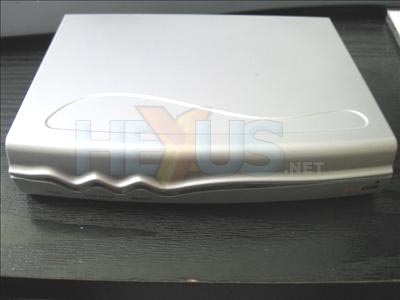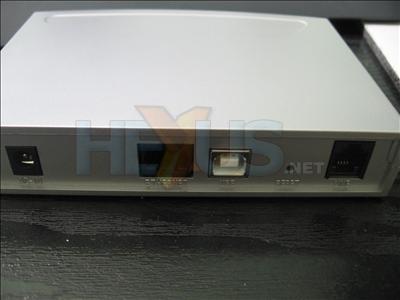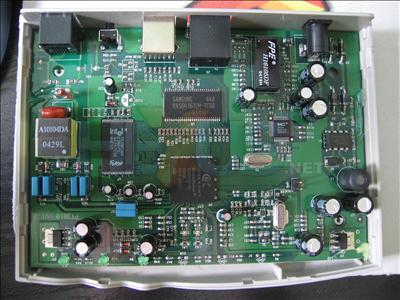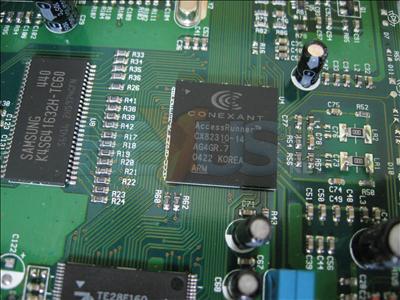It's all about the ARM, or is it?
Cheap and cheerful
Let's start with a little look at the framework of a cheap router. In this case it's a Safecom SAMR-4110. It's been serving a home connection on and off for a year or so, initially in conjunction with a 10/100 switch and later a Linksys 802.11g wireless access point. It worked... most of the time.
Exciting isn't it? Anyway, it's got a single ethernet port, along with a single USB port, plus a reset button, ADSL line in and AC-power in. Plug a network switch into that ethernet port and you have yourself a wired router. Plug a wireless access point into it and you have a wireless router, or just plug one computer in via USB, the other via ethernet and you can share the connection between two computers.
Taking a look inside will let us reveal to you a little more about how these things are put together.
Ignore most of the resistors and capacitors (passive components are boring, right?), and what do we have going on in there? At the top right there are four diodes and some larger capacitors, which rectify and smooth the incoming AC power supply. A lot of routers won't have this, as the rectification is done inside the power brick, but in this case the arrangement is a little different.
Move along the top and there's some RAM. It's an 8MiB DRAM part capable of 166MHz. The Intel chip is 2MiB of flash memory on which the router's operating system and settings are stored. To the far left is the circuitry for the incoming telephone line. Along the bottom of the board you can see three LEDs, plus silkscreens for three more, suggesting this board can, with different components, serve as a 4-port router. There's a network PHY on there too for the ethernet port.
Slap bang in the middle of the board is where the magic happens.
This is a Conexant ADSL router. No really, the chip is. The CX82310 has everything you need in it to route ADSL. It's your ADSL modem, it's your processor and it's got interfaces for LAN side networking. Hook up a network PHY to the CX82310 and you have an ethernet capable router. Stick some switching hardware on the end of that and it becomes a 4-port router. Bang a USB 1.1 interface onto it and you have what is essentially a USB network adapter connecting PC and router. There's even PCMCIA signaling, which allows for a WiFi controller to be used with the chip.
So, if you haven't worked it out by now, this Conexant chip is flippin' versatile. So versatile, in fact, that most nicely priced routers will use it. All a manufacturer has to do is decide what interfaces to hang off it. Of course there's the problem of the OS to tackle. VxWorks, a real-time UNIX-like OS, is what you're likely to find on there, along with a web server for the manufacturer to create a web interface.
Doing the processing work is an ARM940T processor that runs at 168MHz. Not exactly the sharpest knife in the drawer, but for the amount of work required to serve a home or even small office network, it should do. The problems tend to arrive when the software runs into trouble. There isn't a whole lot of memory onboard these things, so a leak, or too many connections, or some other bug, can easily lead to a crash or slowdown. Pay a little more than £30 for a router, say £50, and the firmware might be kept more regularly up to date and be more stable, though there's no guaranteeing that.
The similarities between routers based on this chipset mean that enthusiasts are often caught flashing... different company's firmwares onto their router, lusting for newer features of better stability. Indeed, I've done this to mine, and while I got more features, they made it less stable.
£150 of routing power
So what does five times more money get for you in the way of packet processing power? A more powerful ARM, perhaps an XScale? What about some sort of x86 hardware, or maybe something RISCy. Nope, Draytek's Vigor2800VG has at its heart an ARM940T. Five times the cash gets you the same processing power. Don't pass judgement yet, however. Let's take it slow and take a look at what you get when you purchase a Vigor.













